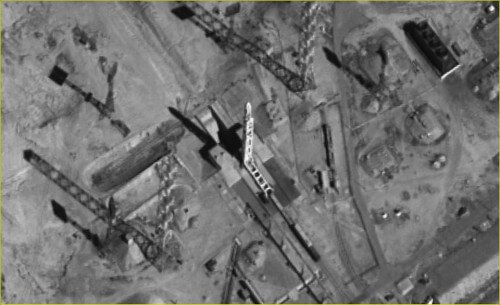The technology is based on a new mathematical theory called compressed sensing. An experimental process was recently completed, in which a compressive imager was designed and implemented and used to photograph various objects with the help of liquid crystals

Ben-Gurion University of the Negev is leading a collaboration with Imagest ISI in the development of a high-resolution spectral sensing system for space missions.
Details of this were given by the head of the research team on behalf of the university, Prof. Adrian Stern and the Vice President of Ben-Gurion University of the Negev and the Dean for Research and Development Prof. Dan Blumberg, at the Nextech international conference for advanced technologies that took place today in Beer Sheva's new high-tech park, the development of a spectral sensing system was also announced High resolution for space missions. This is a conference that is the first meeting of its kind in Israel that connects those involved in the most advanced technological developments from global industry and academia.
At the basis of the said development is a technology that is not tied to the limiting principles that exist today in most imaging systems and therefore enables greatly improved performance. The beginning of the research included developing a breakthrough photography method, based on a new mathematical theory called compressed sensing. An experimental process was recently completed, in which a compressive imager was designed and implemented and used to photograph various objects with the help of liquid crystals. The results, as expected, show many advantages of the system compared to the systems currently used for photography, as well as the possibility of taking photos with spectral resolutions at least ten times higher than those currently accepted in parallel systems.
In this context, it was reported that the continuation phase of the research has already begun, and various experiments are currently being carried out at Ben-Gurion University, which include the use of tiny resonance-based encoders for hyperspectral and ultraspectral imaging purposes intended for operation on a space platform.
At the end of the development, the camera will make it possible to shoot in high resolution (similar to the resolution of monochromatic photography known today) in hundreds of spectral channels and utilizing the compressed sensing theory to save 10% of the image size we know today. This collaboration between Imagest, a leading industry in the field of civil space, and academia culminates the newspace concept, which enables innovation and creativity in the space industry and will allow Imagest to lead the field of spectral sensing in the world.
The international conference for advanced technologies, held at the high-tech park near Ben-Gurion University, is an initiative of the Israel Defense magazine and website, the Geb Yam Negev high-tech park, Ben-Gurion University of the Negev, the city of Beersheba and Cybertech.
The conference was held for the first time in the area of the new high-tech park of Beer Sheva, where it was decided to establish the national cyber center CERT-IL, with the participation of international and Israeli giant companies, start-up companies and the most advanced research bodies in Israel.
